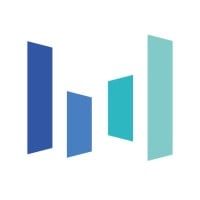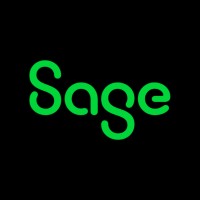
Airbnb Company Cyber Security Posture
airbnb.comAirbnb was born in 2007 when two Hosts welcomed three guests to their San Francisco home, and has since grown to over 5 million Hosts who have welcomed over 1.5 billion guest arrivals in almost every country across the globe. Every day, Hosts offer unique stays and experiences that make it possible for guests to connect with communities in a more authentic way.
Airbnb Company Details
airbnb
48785 employees
2845972.0
511
Software Development
airbnb.com
189
AIR_1562828
In-progress
Between 900 and 1000
This score is AI-generated and less favored by cyber insurers, who prefer the TPRM score.
 Airbnb Global Score
Airbnb Global Score.png)

Airbnb Company Scoring based on AI Models
| Model Name | Date | Description | Current Score Difference | Score |
|---|---|---|---|---|
| AVERAGE-Industry | 03-12-2025 | This score represents the average cybersecurity rating of companies already scanned within the same industry. It provides a benchmark to compare an individual company's security posture against its industry peers. | N/A | Between 900 and 1000 |
Airbnb Company Cyber Security News & History
| Entity | Type | Severity | Impact | Seen | Url ID | Details | View |
|---|---|---|---|---|---|---|---|
| Airbnb | Cyber Attack | 85 | 4 | 6/2025 | AIR746060225 | Link | |
Rankiteo Explanation : Attack with significant impact with customers data leaksDescription: The article discusses how Airbnb, a major tech sharing economy platform, is vulnerable to scammers who use delusive speech to deceive users. Scammers create fake listings and reviews, luring victims into financial and physical danger. Victims have experienced assaults, robberies, and even more severe crimes. The platform's trust mechanisms have flaws, allowing scammers to bypass verifications and continue their fraudulent activities. | |||||||
Airbnb Company Subsidiaries

Airbnb was born in 2007 when two Hosts welcomed three guests to their San Francisco home, and has since grown to over 5 million Hosts who have welcomed over 1.5 billion guest arrivals in almost every country across the globe. Every day, Hosts offer unique stays and experiences that make it possible for guests to connect with communities in a more authentic way.
Access Data Using Our API

Get company history
.png)
Airbnb Cyber Security News
They thought it was Airbnb, then their bank accounts were drained
Cybersecurity experts warn of a rise in fake travel websites mimicking platforms like Airbnb and Booking.com to steal users' personal data.
PyPI, npm, and AI Tools Exploited in Malware Surge Targeting DevOps and Cloud Environments
Researchers from SafeDep and Veracode detailed a number of malware-laced npm packages that are designed to execute remote code and download additional payloads.
News | Cybersecurity company leases buildings once slated to be Airbnb headquarters
A cybersecurity firm has quietly taken over a lease on a giant Silicon Valley office park that was once supposed to become the headquarters of ...
Artificial intelligence and cybersecurity: How worried should travel brands be?
The security of communications, whether handwritten or electronic, has been an arms race ever since Julius Caesar shifted the alphabet to ...
Travel Industry Faces Increasing Cybersecurity Threats: A Close Look
The travel industry faces an increasingly complex cybersecurity threat landscape, with technological advancements and distribution facilitating more ...
Women Know Cyber: 150 Fascinating Females Fighting Cybercrime
150 Fascinating Females Fighting Cybercrime. Role models for students, parents, educators, and the cybersecurity community.
Does Your Airbnb Have Hidden Cameras? Here's How to Check
Though Airbnb banned indoor cameras, that won't stop unscrupulous hosts. Here's what to do, before and after you book, to make sure you're ...
The 9 Most Common Airbnb Scams and How to Avoid Them
Short-term rentals are a popular way to book lodging, but you should be cautious when you choose one. Here's how to avoid Airbnb scams.
New Research Exposes Airbnb as Breeding Ground For Cybercrime
Cyber-criminals have been increasingly exploiting the Airbnb platform for fraudulent endeavors. A new analysis by cybersecurity experts at ...

Airbnb Similar Companies

Rakuten
Rakuten Group, Inc. (TSE: 4755) is a global technology leader in services that empower individuals, communities, businesses and society. Founded in Tokyo in 1997 as an online marketplace, Rakuten has expanded to offer services in e-commerce, fintech, digital content and communications to 1.9 billion

IGT
IGT (NYSE:IGT) is the global leader in gaming. We deliver entertaining and responsible gaming experiences for players across all channels and regulated segments, from Lotteries and Gaming Machines to Sports Betting and Digital. Leveraging a wealth of compelling content, substantial investment in inn

ByteDance
ByteDance is a global incubator of platforms at the cutting edge of commerce, content, entertainment and enterprise services - over 2.5bn people interact with ByteDance products including TikTok. Creation is the core of ByteDance's purpose. Our products are built to help imaginations thrive. This i

Sage
At Sage, we knock down barriers with information, insights, and tools to help your business flow. We provide businesses with software and services that are simple and easy to use, as we work with you to give you that feeling of confidence. Customers trust our Payroll, HR, and Finance software to m

Founded in 2003, LinkedIn connects the world's professionals to make them more productive and successful. With more than 1 billion members worldwide, including executives from every Fortune 500 company, LinkedIn is the world's largest professional network. The company has a diversified business mode

Instacart
Instacart, the leading grocery technology company in North America, works with grocers and retailers to transform how people shop. The company partners with more than 1,500 national, regional, and local retail banners to facilitate online shopping, delivery and pickup services from more than 85,000

Frequently Asked Questions
Explore insights on cybersecurity incidents, risk posture, and Rankiteo's assessments.
Airbnb CyberSecurity History Information
How many cyber incidents has Airbnb faced?
Total Incidents: According to Rankiteo, Airbnb has faced 1 incident in the past.
What types of cybersecurity incidents have occurred at Airbnb?
Incident Types: The types of cybersecurity incidents that have occurred incident Cyber Attack.
How does Airbnb detect and respond to cybersecurity incidents?
Detection and Response: The company detects and responds to cybersecurity incidents through containment measures with Trust and safety mechanisms, Rapid response teams, Travel insurance for guests and remediation measures with Machine learning technology to stop fake listings.
Incident Details
Can you provide details on each incident?

Incident : Disinformation and Scams
Title: Airbnb Scams and Delusive Speech
Description: Big tech sharing economy platforms like Airbnb and Uber are marketed as trustworthy, but a new book by a South African media scholar argues that they are highly vulnerable to scammers who spread delusive speech (a form of disinformation, designed to deceive by criminal intent).
Type: Disinformation and Scams
Attack Vector: Phantom listing scam, Bait and switch scams, Fake positive reviews, Misleading property images, Delusive tactics
Vulnerability Exploited: Trust in the platform's review system and verification processes
Threat Actor: Scammers and criminal hosts
Motivation: Criminal intent or nefarious financial gain
What are the most common types of attacks the company has faced?
Common Attack Types: The most common types of attacks the company has faced is Cyber Attack.
How does the company identify the attack vectors used in incidents?
Identification of Attack Vectors: The company identifies the attack vectors used in incidents through Fake listings and reviews.
Impact of the Incidents
What was the impact of each incident?

Incident : Disinformation and Scams AIR746060225
Brand Reputation Impact: Potential damage to Airbnb's brand reputation
Payment Information Risk: Guests redirected to alternative payment methods
Which entities were affected by each incident?

Incident : Disinformation and Scams AIR746060225
Entity Type: Sharing Economy Platform
Industry: Travel and Accommodation
Location: Global
Customers Affected: Multiple victims from around the world
Response to the Incidents
What measures were taken in response to each incident?

Incident : Disinformation and Scams AIR746060225
Containment Measures: Trust and safety mechanisms, Rapid response teams, Travel insurance for guests
Remediation Measures: Machine learning technology to stop fake listings
Data Breach Information
What measures does the company take to prevent data exfiltration?
Prevention of Data Exfiltration: The company takes the following measures to prevent data exfiltration: Machine learning technology to stop fake listings.
How does the company handle incidents involving personally identifiable information (PII)?
Handling of PII Incidents: The company handles incidents involving personally identifiable information (PII) through were Trust and safety mechanisms, Rapid response teams and Travel insurance for guests.
Lessons Learned and Recommendations
What lessons were learned from each incident?

Incident : Disinformation and Scams AIR746060225
Lessons Learned: Airbnb's review curation mechanisms should be revamped according to internationally recognised human rights frameworks that protect freedom of speech. Protocol for swiftly removing offending listings should be developed.
What recommendations were made to prevent future incidents?

Incident : Disinformation and Scams AIR746060225
Recommendations: Travellers should be extra cautious, seek recommendations from trusted sources, consider established hotels, check property locations on Google Street View, have a Plan B, and always buy travel insurance.
What are the key lessons learned from past incidents?
Key Lessons Learned: The key lessons learned from past incidents are Airbnb's review curation mechanisms should be revamped according to internationally recognised human rights frameworks that protect freedom of speech. Protocol for swiftly removing offending listings should be developed.
What recommendations has the company implemented to improve cybersecurity?
Implemented Recommendations: The company has implemented the following recommendations to improve cybersecurity: Travellers should be extra cautious, seek recommendations from trusted sources, consider established hotels, check property locations on Google Street View, have a Plan B, and always buy travel insurance..
References
Where can I find more information about each incident?

Incident : Disinformation and Scams AIR746060225
Source: The Conversation
Where can stakeholders find additional resources on cybersecurity best practices?
Additional Resources: Stakeholders can find additional resources on cybersecurity best practices at and Source: The ConversationUrl: https://theconversation.com.
Initial Access Broker
How did the initial access broker gain entry for each incident?

Incident : Disinformation and Scams AIR746060225
Entry Point: Fake listings and reviews
Post-Incident Analysis
What were the root causes and corrective actions taken for each incident?

Incident : Disinformation and Scams AIR746060225
Root Causes: Flaws in Airbnb's verification processes and review curation mechanisms
Corrective Actions: Revamp review curation mechanisms and develop a protocol for removing offending listings
What corrective actions has the company taken based on post-incident analysis?
Corrective Actions Taken: The company has taken the following corrective actions based on post-incident analysis: Revamp review curation mechanisms and develop a protocol for removing offending listings.
Additional Questions
General Information
Who was the attacking group in the last incident?
Last Attacking Group: The attacking group in the last incident was an Scammers and criminal hosts.
Response to the Incidents
What containment measures were taken in the most recent incident?
Containment Measures in Most Recent Incident: The containment measures taken in the most recent incident were Trust and safety mechanisms, Rapid response teams and Travel insurance for guests.
Lessons Learned and Recommendations
What was the most significant lesson learned from past incidents?
Most Significant Lesson Learned: The most significant lesson learned from past incidents was Airbnb's review curation mechanisms should be revamped according to internationally recognised human rights frameworks that protect freedom of speech. Protocol for swiftly removing offending listings should be developed.
What was the most significant recommendation implemented to improve cybersecurity?
Most Significant Recommendation Implemented: The most significant recommendation implemented to improve cybersecurity was Travellers should be extra cautious, seek recommendations from trusted sources, consider established hotels, check property locations on Google Street View, have a Plan B, and always buy travel insurance..
References
What is the most recent source of information about an incident?
Most Recent Source: The most recent source of information about an incident is The Conversation.
What is the most recent URL for additional resources on cybersecurity best practices?
Most Recent URL for Additional Resources: The most recent URL for additional resources on cybersecurity best practices is https://theconversation.com .
Initial Access Broker
What was the most recent entry point used by an initial access broker?
Most Recent Entry Point: The most recent entry point used by an initial access broker was an Fake listings and reviews.
What Do We Measure?
















Every week, Rankiteo analyzes billions of signals to give organizations a sharper, faster view of emerging risks. With deeper, more actionable intelligence at their fingertips, security teams can outpace threat actors, respond instantly to Zero-Day attacks, and dramatically shrink their risk exposure window.
These are some of the factors we use to calculate the overall score:
Identify exposed access points, detect misconfigured SSL certificates, and uncover vulnerabilities across the network infrastructure.
Gain visibility into the software components used within an organization to detect vulnerabilities, manage risk, and ensure supply chain security.
Monitor and manage all IT assets and their configurations to ensure accurate, real-time visibility across the company's technology environment.
Leverage real-time insights on active threats, malware campaigns, and emerging vulnerabilities to proactively defend against evolving cyberattacks.




